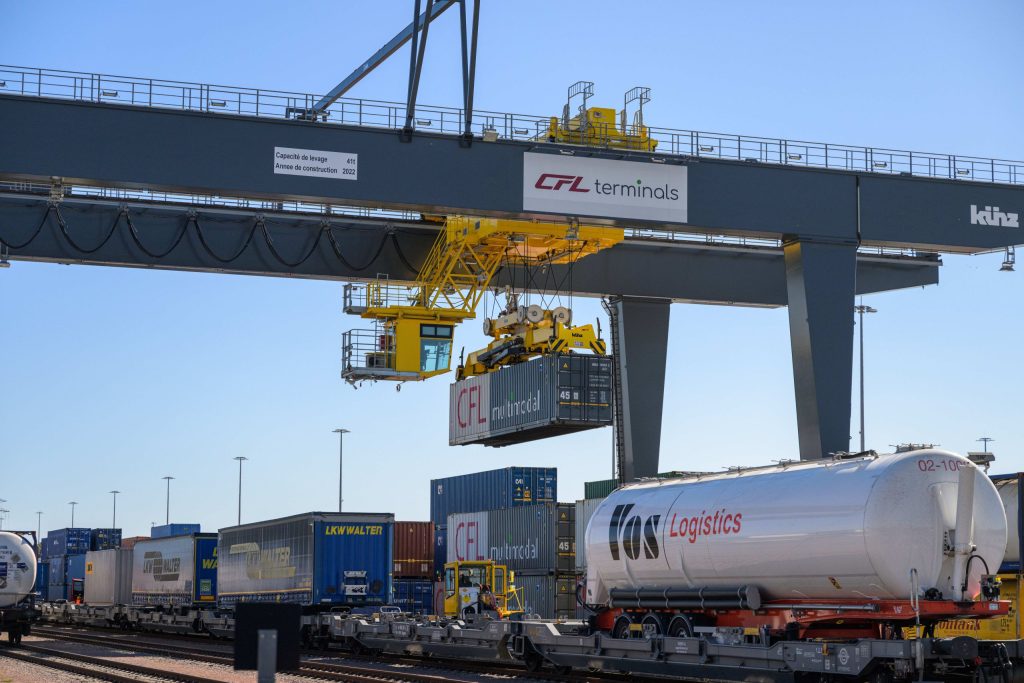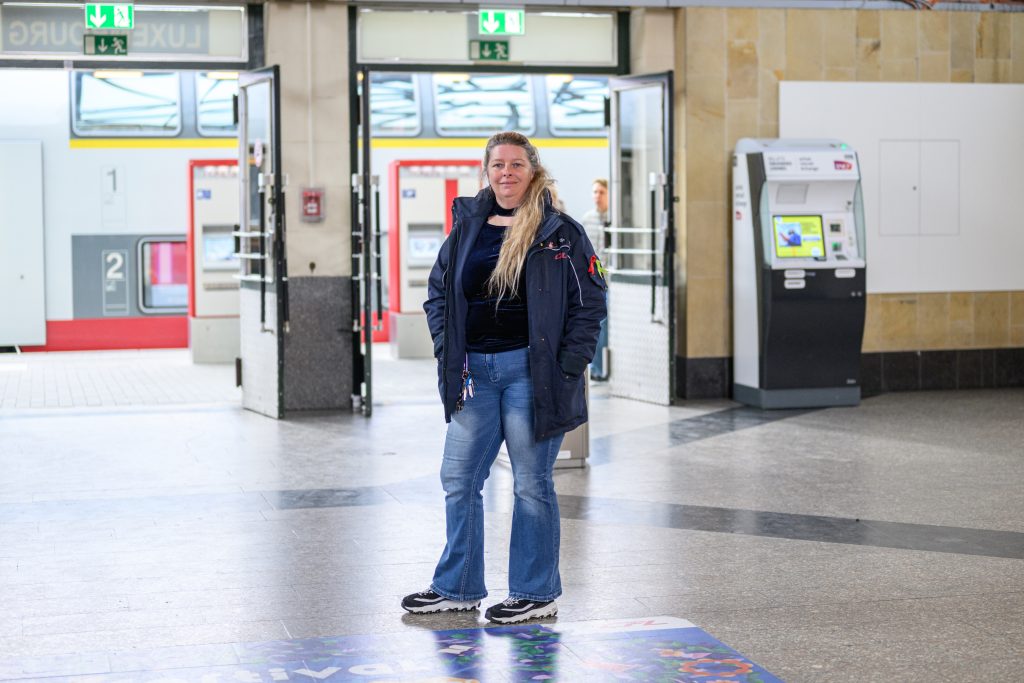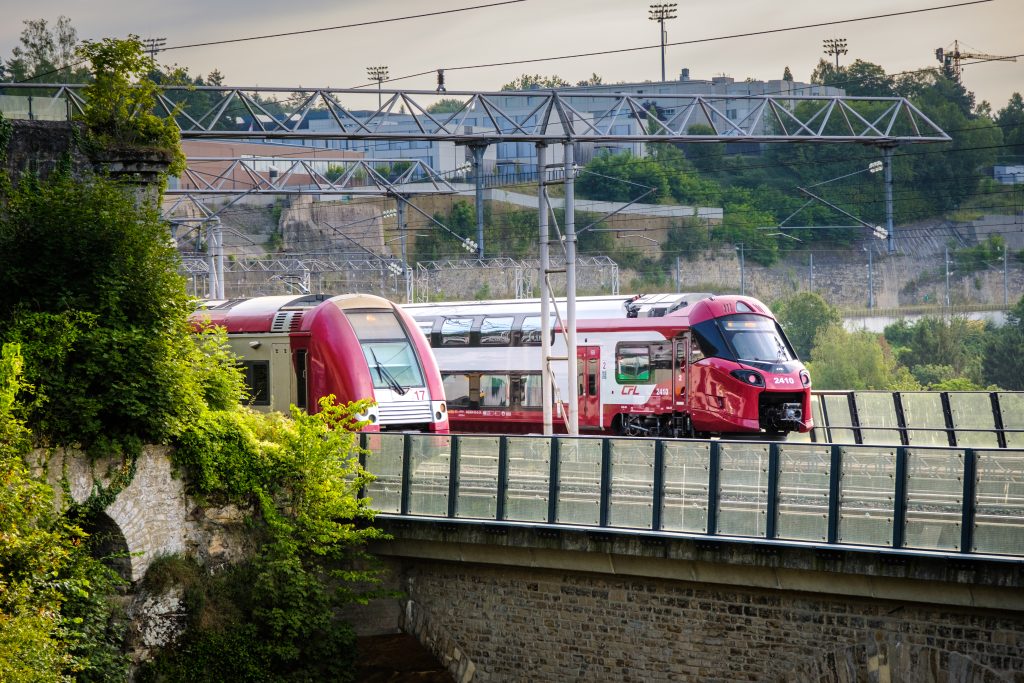
“Knachenmillen” – the so-called “Bone Mill”
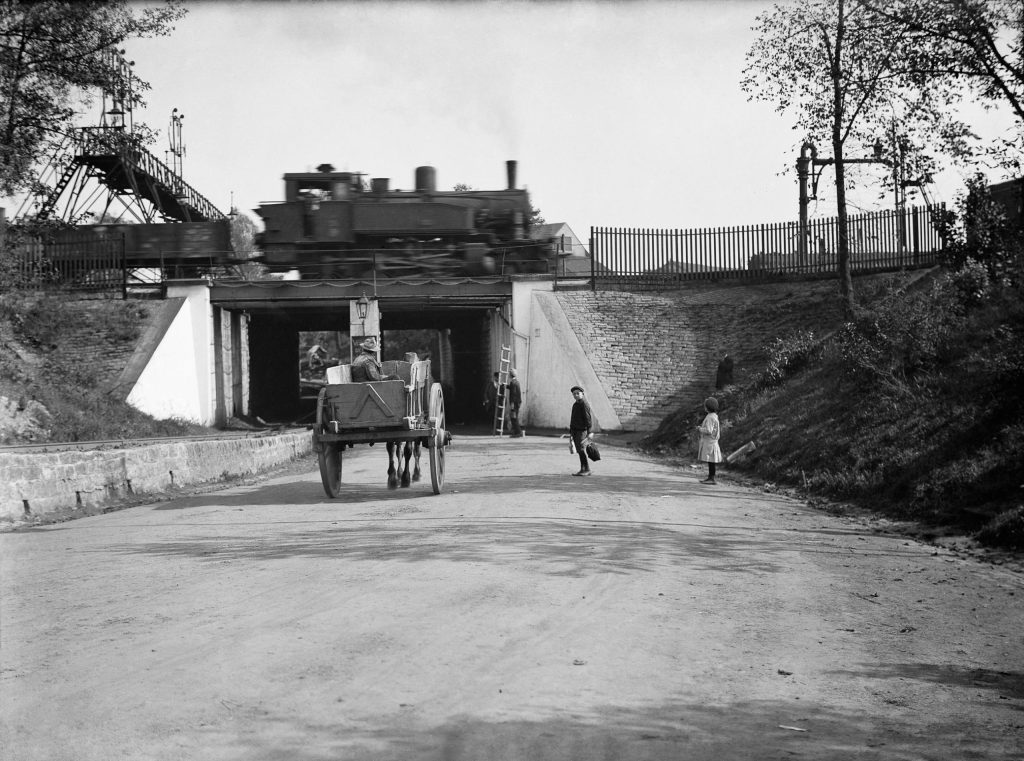
Every month, we invite you to hop aboard the “History Train” to (re)discover a piece of Luxembourg’s railway history. From anecdotes to major events, we’ll take you through the rich heritage of Luxembourg’s railways.
In 1858, when construction began on the new Luxembourg Station—located at the time within the municipality of Hollerich—the railway network cut across several communication routes, such as the one connecting Hollerich to Bonnevoie and the Route de Thionville.
To address this issue, several alternatives were considered and, despite some opposition, the State opted for an underground passage. The entrance on the station side was located at the intersection of Rue Wenceslas I and Rue d’Alsace.
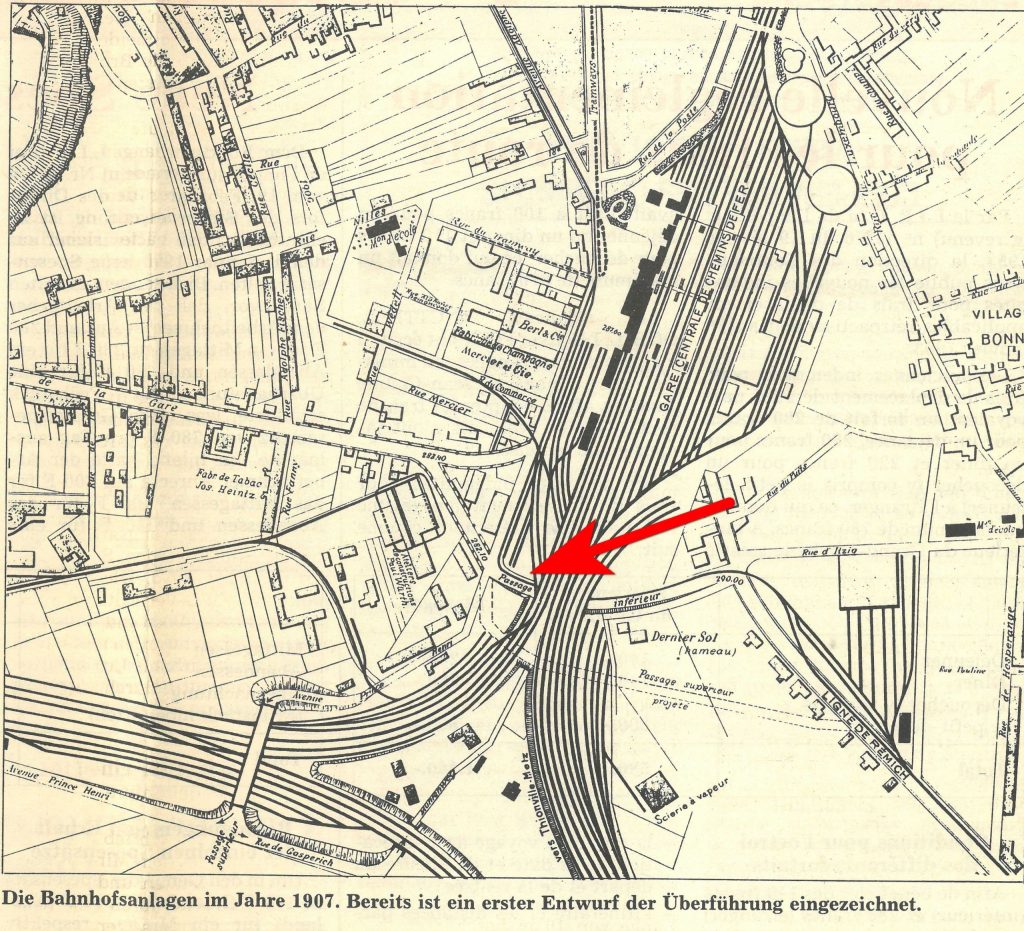
Composed of two parallel sections, each four meters wide, the passage was divided by a solid stone wall. Calling it a tunnel would probably be inaccurate, as the communication route was merely covered with wooden beams on which the rails rested!
This outdated configuration exposed users to considerable noise, as trains passed directly overhead, and guaranteed a certain level of nuissance since the covering was not watertight. There was also a constant risk of injury from horses, which could panic due to the noise. The dangerous nature of the underground passage became well-known and was mentioned in official reports.
With the opening in 1882 of the narrow-gauge Luxembourg–Remich line, one of the two lanes of the passage was reserved for the Jangeli train, further worsening conditions for pedestrians. Frequent accidents occurred, including two serious ones in 1904 and 1906. In both cases, a train heading toward the Bonnevoie depot (in operation since 1903) collided with a train arriving from Remich at the exit of the passage.
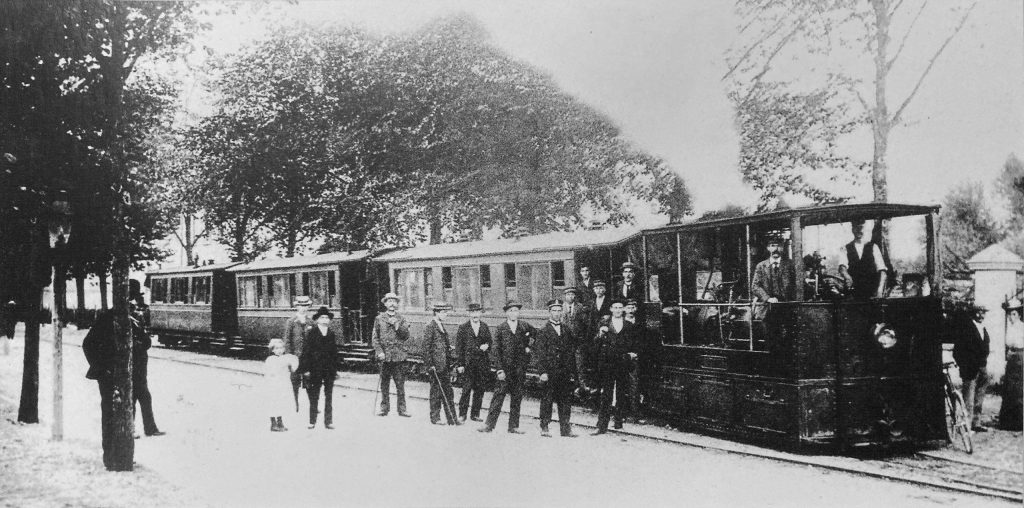
These accidents earned the underground passage the grim nickname “Knachenmillen – Bone Mill” from a population protesting the dangerous bottleneck on the Bonnevoie side. However, it wasn’t until 1929, with the opening of the Bowstring-type bridge allowing road traffic and pedestrians to cross the tracks, that the underground passage finally lost its purpose and was decommissioned. A kind of exit… from above!
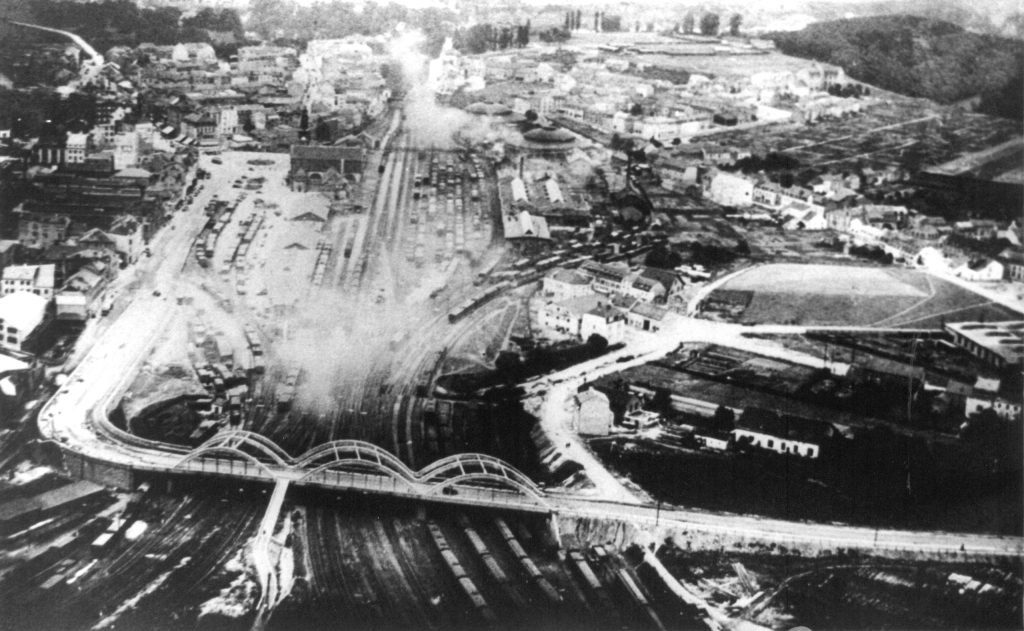
By today’s safety standards, situations such as that of the old ‘bone mill’ would be unthinkable. Safety, now the top priority for the CFL, is an integral part of planning and design for the development of the rail network and the ever-increasing number of multimodal interchanges. As in these projects:
